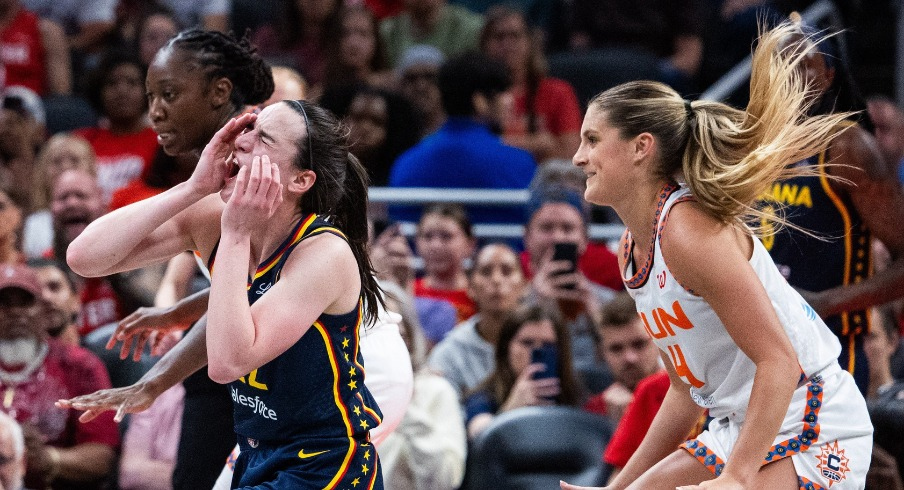What started as a routine WNBA matchup turned into a boiling point for the league when JC Sheldon of the Connecticut Sun delivered what many are calling one of the dirtiest performances in recent memory—leaving Indiana Fever star Caitlin Clark in tears and clutching yet another injury.
From the tipoff, the tone was set. JC Sheldon locked in on Clark, not with a defender’s focus, but with an aggressor’s intensity. She hounded her full-court, threw elbows, pushed from behind, and made sure every possession felt like a warzone. And the referees? Silent.
Fans expected a battle between two competitive teams. What they got instead was a one-sided hunt, with Clark as the prey. Sheldon’s defense quickly crossed the line, becoming less about the game and more about control, dominance, and intimidation.
It all came to a head in the third quarter. As Clark delivered a simple bounce pass, Sheldon slammed into her side—hip and elbow first—sending her crashing to the floor. Clark immediately clutched her groin, clearly in pain. Moments later, she was on the bench, tears rolling down her cheeks under a towel.
The arena went quiet. The broadcast paused. And online, chaos erupted.
Social media exploded with outrage. Video clips of Sheldon’s physical hits circulated rapidly. Side-by-side footage showed a pattern: shoves with no ball in play, sneaky elbows thrown when refs weren’t watching, off-ball collisions designed to wear Clark down. And it worked.

Fans and analysts began calling it for what it was—not defense, but a calculated effort to injure.
“Sheldon wasn’t playing basketball,” one post read. “She was on a mission to take Caitlin Clark out.”
Coach Stephanie White of the Fever didn’t mince words in the postgame press conference. “That was not competitive play,” she said, visibly angry. “It was targeted aggression. Caitlin Clark deserves better, and so does this league.”
Even those normally quiet about officiating issues spoke out. Rival coaches hinted at concern. Veteran players reposted clips calling for change. And fans, especially the thousands of new supporters drawn in by Clark’s rise, demanded accountability.
#SuspendSheldon started trending within hours.
Critics say this isn’t just a one-off problem—it’s a symptom of a larger failure. A failure by the WNBA to adapt to its sudden surge in attention and star power. A failure to train and hold referees accountable. A failure to protect its most valuable player.
Caitlin Clark is the name on every ticket, every jersey, every highlight reel. She’s drawn millions of new fans into the league. But what message does it send when she’s targeted, injured, and left in tears with no meaningful consequences for the aggressor?
For many, JC Sheldon has become a symbol of that failure.
The WNBA has promised change—better officiating, a search for stronger refs, improved protection for players. But time is up. The league must decide: protect its stars or lose them.
As Clark’s status for the All-Star Game remains uncertain, one thing is clear—this wasn’t just a bad night. It was a moment of reckoning.
The league’s response, or lack of it, will speak volumes.
Will JC Sheldon face suspension for her actions? Or will the WNBA once again turn a blind eye, risking the health and future of the player who may define the sport for the next decade?
The answer may shape the league’s future more than any final score.
